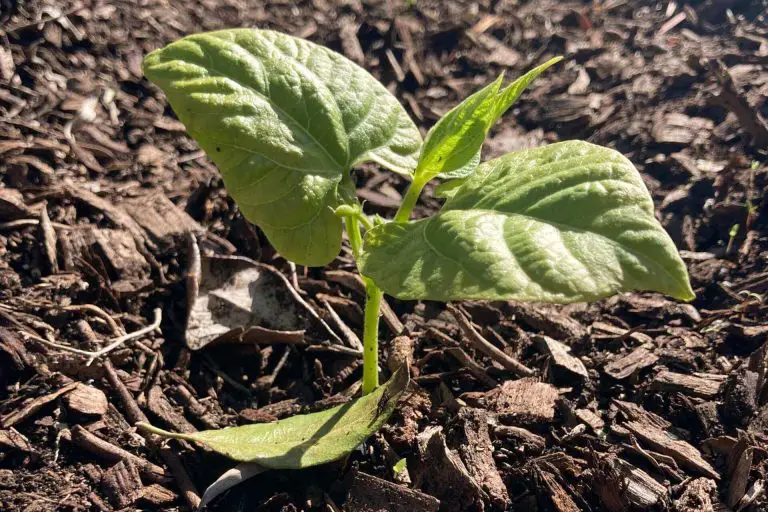When Are Cantaloupes In Season [+Harvesting Tips!]
Want Want to know When Are Cantaloupes In Season? Here is a quick and easy guide, so you can have delicious sweet cantaloupes in no time!
Cantaloupes are known globally for being some of the best summer fruits you can have.
Perfect for those summer picnics, snacks by the beach, or even a sweet treat after the family BBQ. But when is Cantaloupe season and why is this fruit more popular in the summer over the winter season?
Harvest your juicy cantaloupes with high-quality pruners for a quick and clean cut!

DISCLOSURE
Some of the links on here are affiliate links and I may earn if you click on them, AT NO EXTRA cost to you. Hope you find the information here useful! Thanks.
Related Articles:
- When To Harvest Jalapeños? [+Mistakes To Avoid]
- How To Harvest Cabbage-The RIGHT Way!
- What Size Grow Bag For Tomatoes Is Best?
- How To Harvest Romaine Lettuce [A Quick And Easy Guide 2022]
- Beefmaster Tomato Plants: 8 Simple Steps To Grow Them 2022
- 7 White Winter Plants For A Cheerful Winter![2023]
What Is A Cantaloupe?
The cantaloupe is a type of melon from the variety of the muskmelon species and from the family, Cucurbitaceae. They are also known as rockmelons in Australia and New Zealand, sweet melons, and spanspek if you’re from South Africa.
Although they are from the same species, there are actually two types of cantaloupe. The European variety, Cummis melo cantalupensis can be identified by its green skin colour, slightly more similar to a honeydew melon than a traditional North American Cantaloupe.
Cantaloupe loves constant water supply, installing proper irrigation will be the answer to your plants watering needs quickly, easily and efficiently!

The fruit is rough-skinned, yet with a soft, firm juicy flesh. The flesh is pale orange and despite it being overly sugary, isn’t too sweet. Some melons may look more yellow than others, but in the melon world, the cantaloupe isn’t the most flavorsome fruit and so is less sought after than other varieties.
However, it is still one of the most popular side dishes at breakfast in the United States as it is widely available, affordable, sweet, and has multiple health benefits. Some of these health benefits include aiding your immune system and reducing the risk of a heart attack.
The fruit also has high water content and is full of fiber, meaning it can prevent constipation and promote a regular, healthy digestive system. It even has properties for weight loss as it is low in calories and carbohydrates.
Moreover, since cantaloupe isn’t as sweet as some melons, it can still be a tasty refreshing treat, without feeling like you’re overloading on sugar and make you feel as if you’re eating healthy food.
Bear in mind, however, cantaloupes are full of vitamins and minerals and too much of these can actually cause harm. The high potassium content, for example, can lower blood pressure but if you eat too much, can cause problems if you have kidney disease.
Historically, the cantaloupe has made the journey to the New World with Columbus on his second voyage and a number of Popes enjoyed the fruit regularly.
Pope Innocent XII even enjoyed drinking his Port from a carved cantaloupe. Additionally, the name stems from the name of the town when the Papacy kept one of its summer residences; Cantalupo, which is in Sabina.
Note– If you want to make your green fingers happier and your life easier, you can use this affordable 83 pieces ultimate gardening set to help you garden like a pro!
When Are Cantaloupes In Season?
As a summer fruit, from May to September the Cantaloupe is generally in season. If you live in a warm climate, however, they are still in season till around mid-October. Sometimes, Cantaloupes are harvested quite early and this is so they do not rot in supermarkets.
This means when you shop for a cantaloupe, you’ll find them in different stages of ripeness. Although it is available in a supermarket all year round, they are more affordable and somewhat tastier between these months.
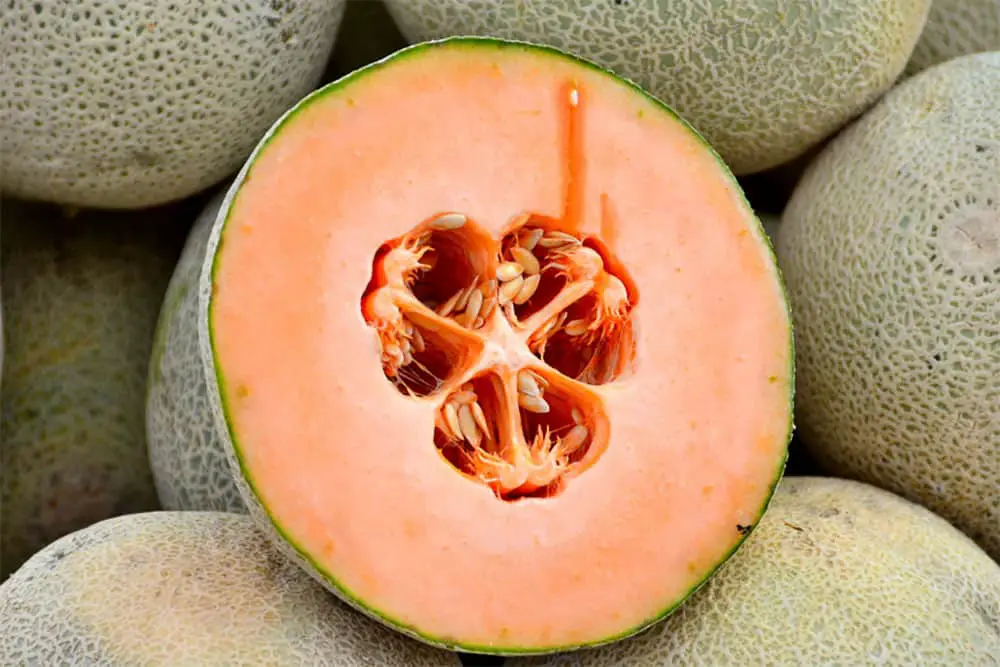
If you do end up with a cantaloupe that isn’t quite ripe enough yet, place them in a dark room that is kept cool for about two days. Check on it regularly to see how it’s changing and once the major signs of ripeness appear, you can begin cutting and serving.
Even once cut, cantaloupes will stay fresh for a few days in the refrigerator, so don’t worry about having to eat it all at once.
So what are the signs of ripeness? Picking out a ripe cantaloupe is actually easier than you think. Rather than knocking or shaking the fruit, try smelling it first. If it is ripe enough, it will have a sweet smell coming from its rind near where the stem was broken.
If we’re picking the fruit ourselves, most cantaloupes are all ready to be picked once ripened and they can change from green to tan to yellow-ish gray between the netting. The rind itself will be quite yellow and soft.
Use organic, Non-GMO, Open-pollinated cantaloupe seeds for better and healthy fruits from seed to harvest!

Ripe cantaloupes are also heavier than they appear due to the high fluid content and fleshy meat inside. Spoiled cantaloupe, on the other hand, will appear sickly both on the inside and outside.
If it’s whole, you will see spots and bruises that become increasingly more visible, and the melon will become soft, eventually losing its ability to hold its original shape.
You might even spot some liquid seeping through the rind and instead of that sweet smell you get from a ripe cantaloupe, you’ll instead get a fairly nasty odor.
Honeydew Vs. Cantaloupe
Another popular melon we’ve all heard of is honeydew. This type of melon is a type of muskmelon that has a smooth, waxy white skin and tastes similar to cucumbers, yet with an added sweetness.
Both melons have similar nutritional benefits, yet cantaloupe contains twice as much Vitamin C as honeydew, 61% DV in cantaloupe compared to 30% DV in honeydew.
Cantaloupe also has more vitamin A, with 68% DV compared to only 1% DV in honeydew. These measurements are based on a 3.5-ounce serving.
When trellising your cantaloupe plants with strings, use plant support clips to help provide support to your vining cantaloupe plants!

How To Serve Cantaloupe
If you are wondering when are cantaloupes in season, you may also be wondering, the best way to serve them!
As it’s such a versatile fruit, there are so many ways you could serve cantaloupe.
Why not try cutting it up and adding some sweetness to your salad, popping it on a fruit tray to give it an extra bit of color, adding it to your salsa to sweeten up your next nacho night, or even adding onto some kebab sticks with some tomatoes, peppers, onion, cilantro, prosciutto, lime and garlic for a Californian twist.
Of course, the melon is still tasty enough to enjoy on its own but if you end up wanting to experiment with some recipes, you’ll find the possibilities are endless.
Final Thoughts
We hope by reading this article you’ve gained a better understanding of the popular fruit that are cantaloupe melons and you know when are cantaloupes in season.
We’ve advised you on how to know when the fruit is ripe, gone over when they are in season, and even given you some history on the fruit so you’re a cantaloupe expert!
Why not try one of our serving suggestions we’ve also included this summer and enjoy the fruit for yourself, we promise you’ll love it!
Well, there you have it, all the answers to your question, When Are Cantaloupes In Season? Hopefully that helped but if you want more info, we found you a video below!


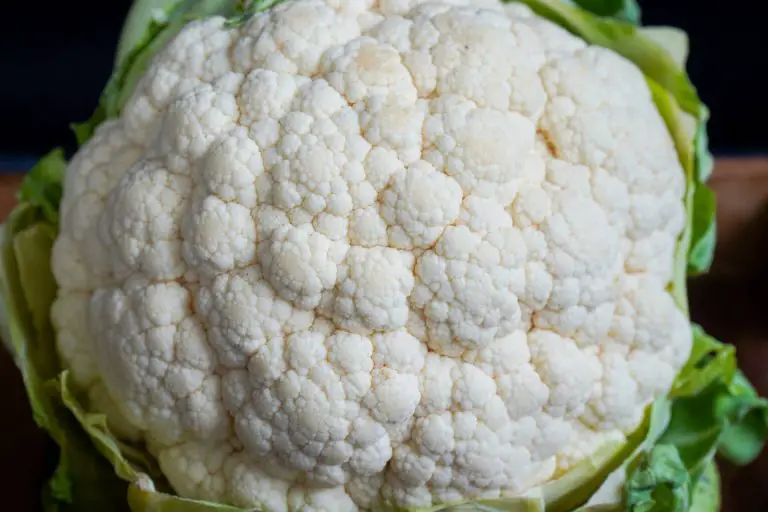
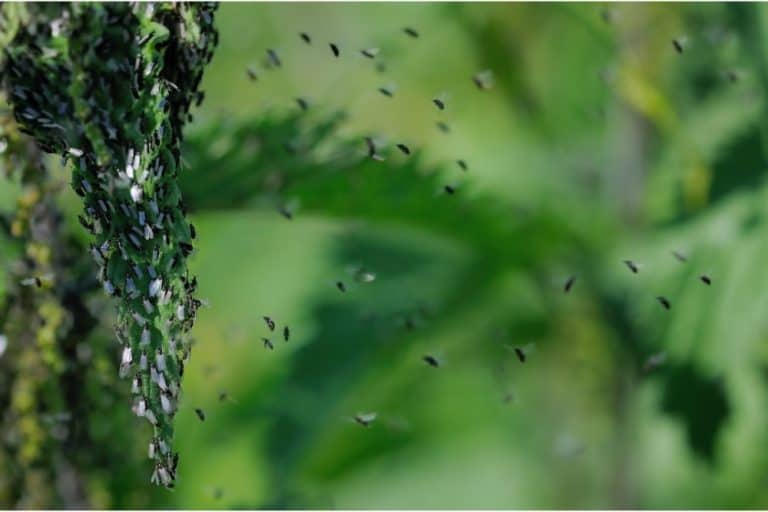
![13 Companion Plants For Bok Choy-Best & Worst![2023]](https://aboveandbeyondgardening.com/wp-content/uploads/2022/10/Companion-Plant-For-Bok-Choy-8-768x511.jpg)
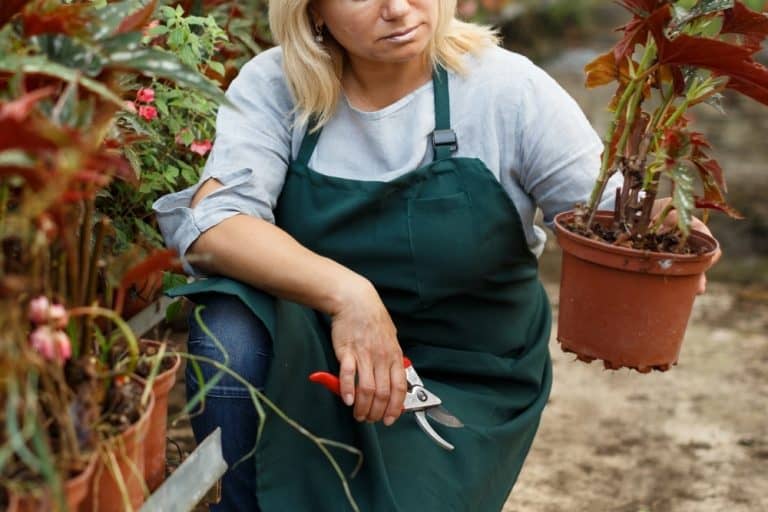
![How Often To Water Ferns Outside [+Growing Tips!]](https://aboveandbeyondgardening.com/wp-content/uploads/2021/10/How-Often-To-Water-Ferns-Outside-768x512.jpg)
